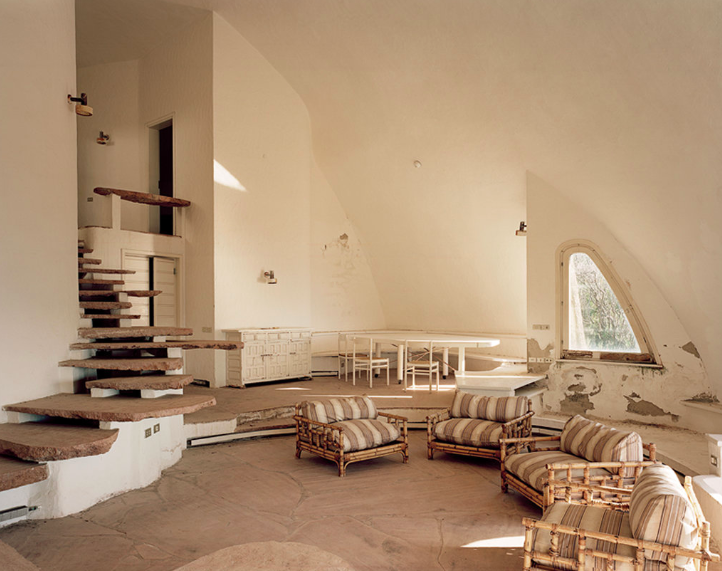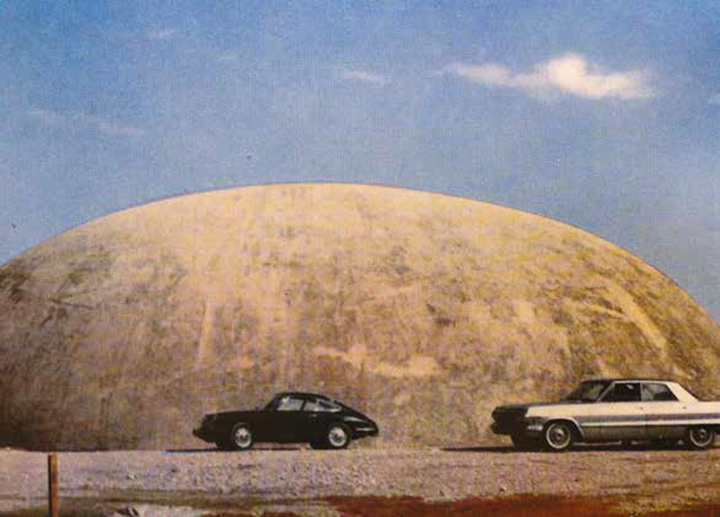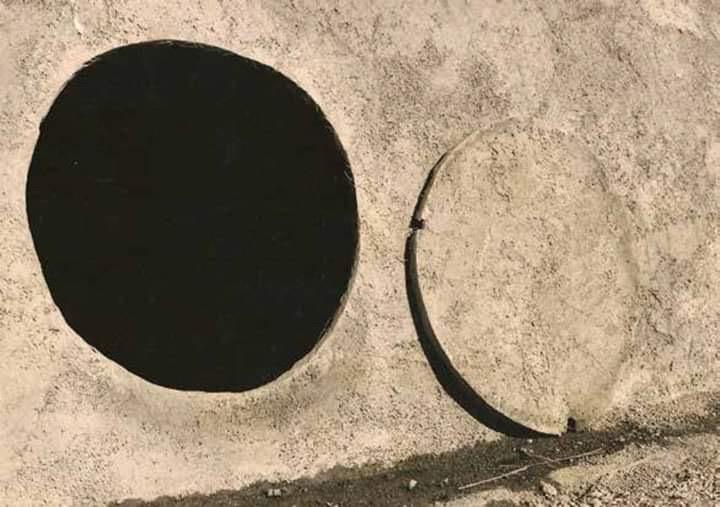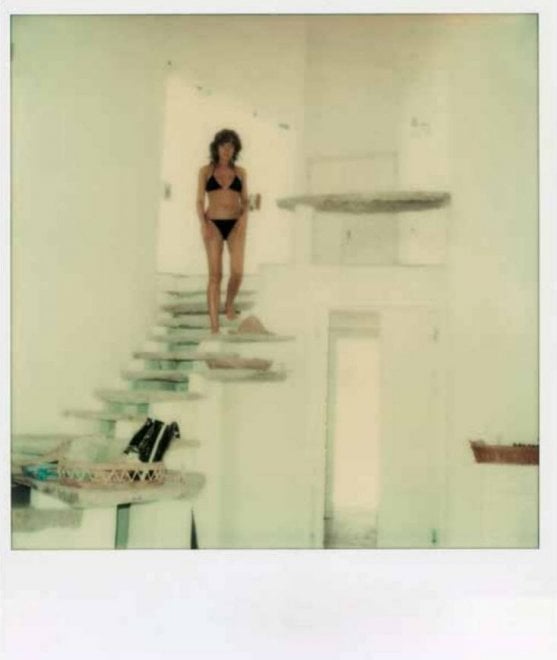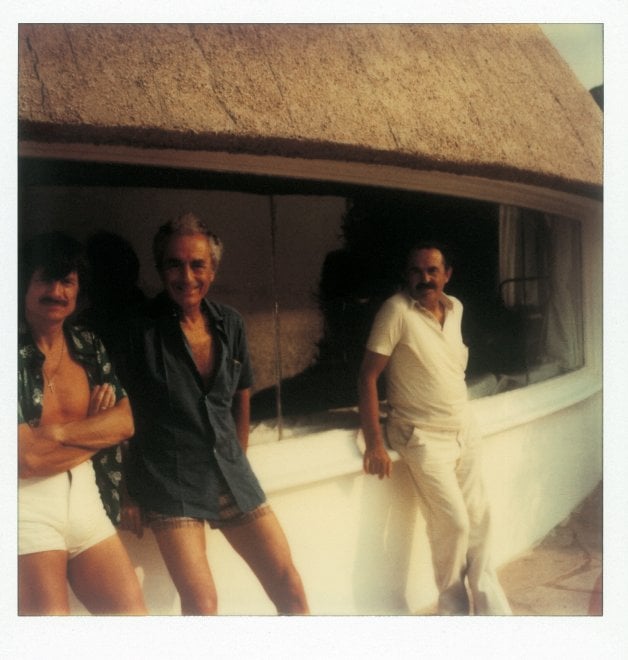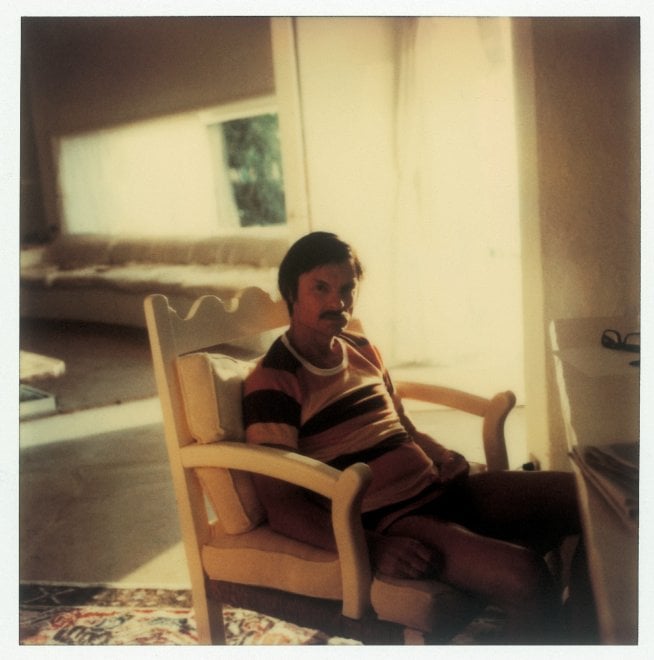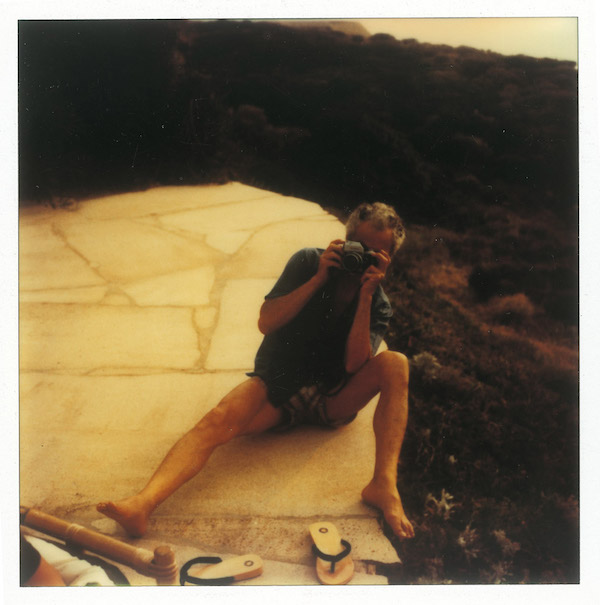The Bini Shell today attracts cinephiles, journalists and curious people from all over the world, as evidenced by the numerous reviews of the place. The attraction is due not only to the wild and breathtaking scenery that surrounds the house, typical of the Costa Paradiso, but especially to the possibility of seeing up close a home that was once inhabited by some of the greatest personalities of the European film history; to imagine the atmosphere of Monica Vitti walking down the staircase of the living room on a lazy summer afternoon, while looking through the (now) dusty window that overlooks the open sea is what is called a unique experience.
This house was the location that Antonioni thought as a set for a possible new film and where he hosted important personalities of Italian and international cinema, as shown by the photo published by the New York Times, with Andreij Tarkovskij, Antonioni and Tonino Guerra on the outdoor terrace during the summer of 1982.
![]()
Michelangelo Antonioni, Enrica Antonioni and Andreij Tarkovskij at Costa Paradiso, Sardinia; © Andreij Tarkovskij Institute
In recent years the dome has been the object of various artistic and cultural initiatives, as narrated by the documentary ‘La Cupola’ by German director Volker Sattel, that include the My Antonioni event, organized by the Italian Institute of Culture in San Francisco with the intervention of Dante Bini, many photo shoots of great fashion brands and several stories published by magazines from all over the world.
The dome in fact represents a place of great artistic and architectural value, a structure defined by Rem Koolhaas, curator of the 14th Architecture Biennale of Venice, as "one of the best architectures of the last hundred years" but also the vivid testimony of a life spent among its unique circular walls by one of the greatest film directors in the history of cinema of all time
The interest in restoration was shown in 2015 when the Superintendency of the Province of Sassari and Nuoro declared it a place of cultural interest. On that occasion, the current owners complained as they wanted to avoid the protective constraints imposed by the MIBACT.
The structure is currently abandoned to neglect, components of deterioration of the concrete are visible on the outside, in particular on the entrance bridge. The interiors, where the original furnishings of the 70s are still present, are surprisingly in good condition even if some signs of illegal occupation have been detected.
For this reason, to stop irreversible damage and deterioration by time and to avoid vandalization, our call has the goal of raising awareness among the local and national institutions involving the current ownership, in order to proceed with a proper restoration and a possible opening to the public.
There are indeed many possibilities for a redevelopment of the building and an architectural and historical preservation: from the creation of an exhibition and museal space to a theatrical and cultural events center. In short, it would be an excellent opportunity for the development of tourism and a cultural growth of the area.
Support our initiative: sign and share our petition
 © Romain Courtemanche
© Romain Courtemanche